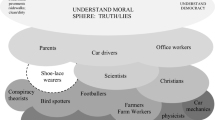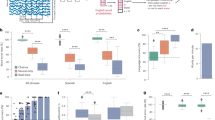Abstract
The paper describes an ongoing project aimed at developing a neural machine translation approach to translating text into sign language, with the translation result presented by a realistic three-dimensional avatar. The approach can be applied to translate texts, books, and Internet pages, improving access to information for deaf individuals and contributing to the social, educational, and labor inclusion of these citizens. The paper elaborates on four fundamental issues related to the approach: (i) the establishment of a written representation of the sign language; (ii) the construction of a parallel corpus involving text from an oral language and the written representation of sign language; (iii) the establishment of a neural machine translation model to perform the translation; (iv) the visual presentation of the translation by a signing avatar. Although focused on translating Brazilian Portuguese into Brazilian Sign Language, the concepts discussed in the paper are general enough to be applied to other written-signed language pairs.






Similar content being viewed by others
References
Bahdanau, D., Cho, K., Bengio, Y.: Neural machine translation by jointly learning to align and translate. arXiv preprint arXiv:1409.0473 (2014)
Brour, M., Benabbou, A.: Atlaslang mts 1: Arabic text language into arabic sign language machine translation system. Procedia Computer Science 148:236–245. https://doi.org/10.1016/j.procs.2019.01.066, https://www.sciencedirect.com/science/article/pii/S1877050919300699, The second international conference in intelligent computing in data sciences – ICDS2018 (2019)
Bungeroth, J., Ney, H.: Statistical sign language translation. In: Streiter, O., Vettori, C. (eds) Proceedings of the LREC2004 workshop on the representation and processing of sign languages: from signwriting to image processing. information techniques and their implications for teaching, documentation and communication. European Language Resources Association (ELRA), Lisbon, Portugal, pp 105–108 (2004)
Bungeroth, J., Stein, D., Dreuw, P., et al.: A german sign language corpus of the domain weather report. In: Proceedings of the fifth international conference on language resources and evaluation (LREC’06). European Language Resources Association (ELRA), Genoa, Italy (2006)
Capovilla, F.C., Rahael, W.D., Temoteo, J.G., et al.: Dicionário Da Língua De Sinais Do Brasil - A Libras Em Suas Mãos. Edusp, São Paulo (2017)
Clark, A.: How to write American sign language. ASLwrite, Burnsville, Minnesota (2012)
Cormier, K., Fenlon, J., Gulamani, S., et al.: BSL corpus annotation conventions version 2.023. Deafness Cognition and Language (DCAL) Research Centre, University College London, Technical report (2015)
Dabre, R., Chu, C., Kunchukuttan, A.: A survey of multilingual neural machine translation. ACM Comput. Surv. (CSUR) 53(5), 1–38 (2020)
Devlin, J., Chang, M., Lee, K., et al.: Bert: Pre-training of deep bidirectional transformers for language understanding. arXiv preprint arXiv:1810.04805 (2018)
ELAN: ELAN (version 6.4). The language archive, https://archive.mpi.nl/tla/ela, computer software (2022)
Elliott, R., Glauert, J.R.W., Kennaway, J.R., et al.: The development of language processing support for the visicast project. In: Proceedings of the fourth international acm conference on assistive technologies. Association for Computing Machinery, New York, NY, USA, Assets ’00, p 101-108, https://doi.org/10.1145/354324.354349, (2000)
Estelita, B.M.: Elis – escrita das línguas de sinais: proposta teórica e verificação prática. PhD thesis, Universidade Federal de Santa Catarina, Florianópolis, Santa Catarina, Brazil (2008)
Gómez, S.E., McGill, E., Saggion, H.: Syntax-aware transformers for neural machine translation: the case of text to sign gloss translation. In: Proceedings of the 14th workshop on building and using comparable corpora (BUCC 2021), pp 18–27 (2021)
Green, T.: The necessity of syntax markers: two experiments with artificial languages. J. Verbal Learn. Verbal Behav. 18(4), 481–496 (1979). https://doi.org/10.1016/S0022-5371(79)90264-0
Hanke, T.: Hamnosys in a sign language generation context. In: Schulmeister, R., Reinitzer, H.: (eds) Progress in Sign Language Research / Fortschritte in der Gebärdensprachforschung. Signum, p 249–266 (2002)
Johnson, R.E., Liddell, S.K.: A segmental framework for representing signs phonetically. Sign Lang. Stud. 11(3), 408–463 (2011)
Johnson, R.E., Liddell, S.K.: Toward a phonetic representation of hand configuration: the fingers. Sign Lang. Stud. 12(1), 5–45 (2011)
Johnson, R.E., Liddell, S.K.: Toward a phonetic representation of signs: sequentiality and contrast. Sign Lang. Stud. 11(2), 241–274 (2011)
Johnson, R.E., Liddell, S.K.: Toward a phonetic representation of hand configuration: the thumb. Sign Lang. Stud. 12(2), 316–333 (2012)
Johnston, T.: Transcription and glossing of sign language texts: examples from Auslan (Australian Sign Language). Int. J. Sign Linguist. 2(1), 3–28 (1991)
Johnston, T.: Corpus linguistics and signed languages: no lemmata, no corpus. In: Crasborn, O., Efthimiou, E., Hanke, T., et al. (eds.) LREC 6–3rd workshop on the representation and processing of sign languages: construction and exploitation of signed language corpora, pp. 82–87. Marrakech, Morocco (2008)
Johnston, T.: From archive to corpus: transcription and annotation in the creation of signed language corpora. In: 22nd Pacific Asian conference on language, information, and computation, pp 16–29 (2008b)
Johnston, T.: Auslan corpus annotation guidelines. Technical report, Macquarie University (Sydney) - La Trobe University (Melbourne) (2019)
Kahlon, N.K., Singh, W.: Machine translation from text to sign language: a systematic review. Univ. Access Inf. Soc. (2021). https://doi.org/10.1007/s10209-021-00823-1
Kamata, K., Yoshida, T., Watanabe, M., et al.: An approach to japanese-sign language translation system. In: Conference proceedings., IEEE international conference on systems, man and cybernetics, pp 1089–1090 vol.3, https://doi.org/10.1109/ICSMC.1989.71466 (1989)
Kim, Y., Denton, C., Hoang, L., et al.: Structured attention networks. arXiv preprint arXiv:1702.00887 (2017)
Koehn, P., Federico, M., Shen, W., et al.: Open source toolkit for statistical machine translation: factored translation models and confusion network decoding. In: CLSP Summer Workshop Final Report WS-2006, Johns Hopkins University (2007)
Kouremenos, D., Ntalianis, K., Kollias, S.: A novel rule based machine translation scheme from Greek to Greek sign language: production of different types of large corpora and language models evaluation. Comput. Speech Lang. 51, 110–135 (2018). https://doi.org/10.1016/j.csl.2018.04.001
Liddell, S.: Grammar, gesture and meaning in American sign language. Cambridge University Press, England (2003)
Luong, M.T., Pham, H., Manning, C.D.: Effective approaches to attention-based neural machine translation. arXiv preprint arXiv:1508.04025 (2015)
Luqman, H., Mahmoud, S.A.: Automatic translation of Arabic text-to-Arabic sign language. Univ. Access Inf. Soc. 18(4), 939–951 (2019). https://doi.org/10.1007/s10209-018-0622-8
McCleary, L., Viotti, E., Leite, T.A.: Descrição das línguas sinalizadas: a questão da transcrição dos dados. ALFA 54(1), 265–289 (2010)
Morrissey, S., Way, A.: An example-based approach to translating sign language. In: Workshop on example-based machine translation, Phuket, Thailand, pp 109–116, https://aclanthology.org/2005.mtsummit-ebmt.14 (2005)
Naert, L., Larboulette, C., Gibet, S.: A survey on the animation of signing avatars: from sign representation to utterance synthesis. Comput. Graph. 92, 76–98 (2020). https://doi.org/10.1016/j.cag.2020.09.003
Núñez-Marcos, A., Perez-de Viñaspre, O., Labaka, G.: A survey on sign language machine translation. Expert Syst. Appl. 213, 118993 (2022)
Papineni, K., Roukos, S., Ward, T., et al.: Bleu: a method for automatic evaluation of machine translation. In: Proceedings of the 40th annual meeting of the Association for Computational Linguistics, pp 311–318 (2002)
Raffel, C., Shazeer, N., Roberts, A., et al.: Exploring the limits of transfer learning with a unified text-to-text transformer. arXiv preprint arXiv:1910.10683 (2019)
San-Segundo, R., Barra-Chicote, R., D’Haro, L., et al.: A spanish speech to sign language translation system for assisting deaf-mute people. In: INTERSPEECH 2006 and 9th international conference on spoken language processing, INTERSPEECH 2006 - ICSLP, https://doi.org/10.21437/Interspeech.2006-420 (2006)
San-Segundo, R., Montero, J.M., Córdoba, R., et al.: Design, development and field evaluation of a Spanish into sign language translation system. Pattern Anal. Appl. 15(2), 203–224 (2012). https://doi.org/10.1007/s10044-011-0243-9
Saunders, B., Camgoz, N.C., Bowden, R.: Progressive transformers for end-to-end sign language production. arXiv preprint arXiv:2004.14874 (2020)
Shogun: Shogun software. https://www.vicon.com/software/shogun/ (2022)
Sountsov, P., Sarawagi, S.: Length bias in encoder decoder models and a case for global conditioning. arXiv preprint arXiv:1606.03402 (2016)
Stahlberg, F.: Neural machine translation: a review. J. Artif. Intell. Res. 69, 343–418 (2020)
Stokoe, W.C.: Sign language structure: an outline of the visual communication system of the American deaf. Studies in Linguistics: Occasional Papers 8 Revised 1978 (1960)
Stoll, S., Camgoz, N.C., Hadfield, S., et al.: Text2sign: towards sign language production using neural machine translation and generative adversarial networks. Int. J. Comput. Vision 128(4), 891–908 (2020). https://doi.org/10.1007/s11263-019-01281-2
Sutton, V.: Lessons in SignWriting—Textbook, 4th edn. SignWriting Press, USA (2014)
Tan, X., Qin, T., Soong, F., et al.: A survey on neural speech synthesis. arXiv (2021). https://doi.org/10.48550/ARXIV.2106.15561
Vaswani, A., Shazeer, N., Parmar, N., et al.: Attention is all you need. In: Guyon, I., Von Luxburg, U., Bengio, S., Wallach, H., Fergus, R., Vishwanathan, S., Garnett, R. (eds.) Advances in neural information processing systems. Curran Associates Inc, Red Hook (2017)
Veale, T., Conway, A.: Cross-modal comprehension in zardoz, an english to sign-language translation system. In: 4th International Workshop on Natural Language Generation, pp. 67–72. Kennebunkport, ME (1994)
Veale, T., Conway, A., Collins, B.: The challenges of cross-modal translation: English-to-sign-language translation in the zardoz system. Mach. Transl. 13(1), 81–106 (1998). https://doi.org/10.1023/A:1008014420317
Will, A.D., Martino, J.M.D., Bezerra, J.: An optimized marker layout for 3D facial motion capture. In: Livesu, M., Pintore, G., Signoroni, A. (eds) Smart Tools and Apps for Graphics—Eurographics Italian Chapter conference. The Eurographics Association, Brescia, Italy, https://doi.org/10.2312/stag.20181303(2018)
Wu, C.H., Su, H.Y., Chiu, Y.H., et al.: Transfer-based statistical translation of Taiwanese sign language using PCFG. ACM Trans. Asian Lang. Inf. Process. 6(1), 1-es (2007). https://doi.org/10.1145/1227850.1227851
Wu, Y., Schuster, M., Chen, Z., et al.: Google’s neural machine translation system: bridging the gap between human and machine translation. arXiv preprint arXiv:1609.08144 (2016)
Zhao, L., Kipper, K., Schuler, W., et al.: A machine translation system from English to American sign language. In: Fourth conference of the association for machine translation in the Americas: Technical Papers, pp. 54–67. Springer-Verlag, Berlin, Heidelberg (2000)
Zoph, B., Yuret, D., May, J., et al.: Transfer learning for low-resource neural machine translation. arXiv preprint arXiv:1604.02201 (2016)
Funding
This study is partly financed by the Coordenação de Aperfeiçoamento de Pessoal de Nível Superior - Brasil (CAPES) - Finance Code 001 Grant no 88887.091672/2014-01, the Conselho Nacional de Desenvolvimento Científico e Tecnológico (CNPq) Grant no 458691/2013-5, the Financiadora de Estudos e Projetos (Finep) Grant no 2778/20, and the Fundação de Amparo à Pesquisa do Estado de São Paulo (FAPESP) Grant no 2021/02365-2.
Author information
Authors and Affiliations
Contributions
All authors contributed to the study’s conception and design. All authors participated in the production of all versions of the manuscript and commented on previous versions of the manuscript. All authors read and approved the final manuscript. As the Corresponding Author, I state that all authors contributed equally to the manuscript, writing and reviewing the text and preparing the figures and table.
Corresponding author
Ethics declarations
Conflict of interest
On behalf of all the authors, the corresponding author states that there are no competing interests that might be perceived to influence the results and discussion reported in this paper. The authors declare no competing interests.
Additional information
Publisher's Note
Springer Nature remains neutral with regard to jurisdictional claims in published maps and institutional affiliations.
Rights and permissions
Springer Nature or its licensor (e.g. a society or other partner) holds exclusive rights to this article under a publishing agreement with the author(s) or other rightsholder(s); author self-archiving of the accepted manuscript version of this article is solely governed by the terms of such publishing agreement and applicable law.
About this article
Cite this article
De Martino, J.M., Silva, I.R., Marques, J.G.T. et al. Neural machine translation from text to sign language. Univ Access Inf Soc (2023). https://doi.org/10.1007/s10209-023-01018-6
Accepted:
Published:
DOI: https://doi.org/10.1007/s10209-023-01018-6




